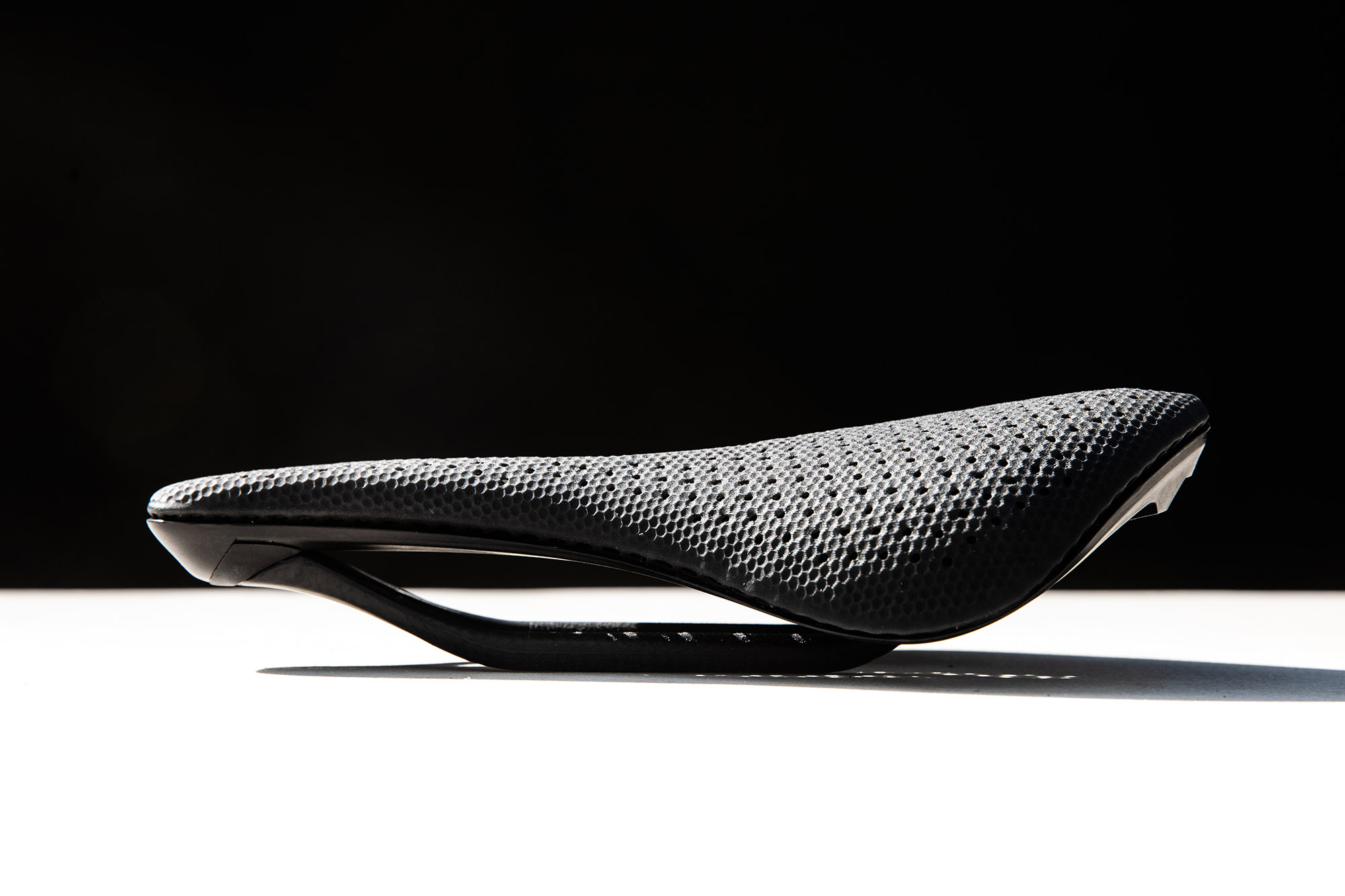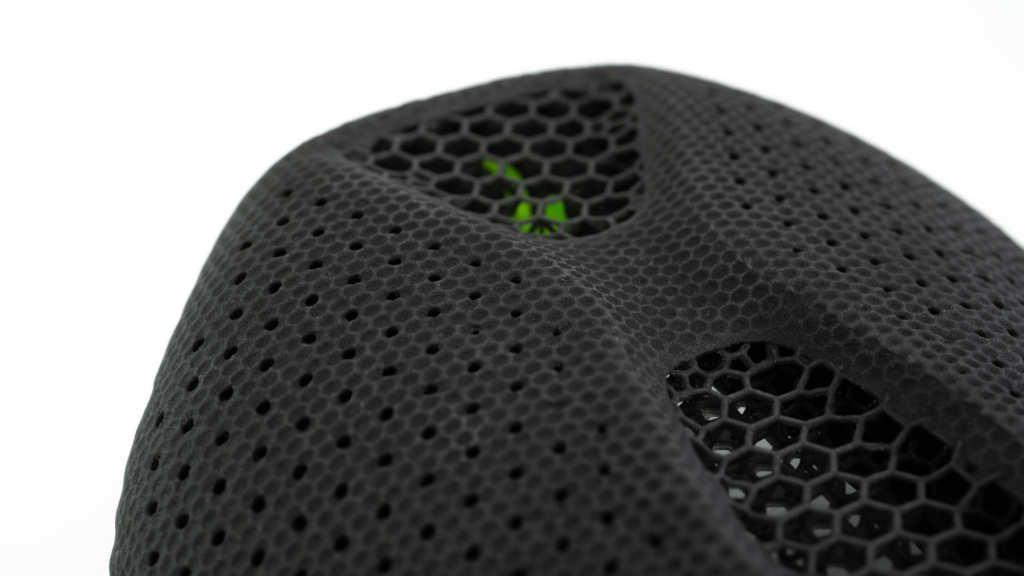For its bold new bike seat design, Specialized moved away from foam padding and into the world of 3D-printed lattices. We learn why sharp performance doesn’t have to skimp on comfort
In the world of top-tier sports equipment, the aim of designers is to ensure that an athlete, their attire and their apparatus can collectively deliver peak performance.
Yet look a little closer and you’ll see some glitches in the system.
Every gram shaved off the weight of a pair of track spikes might be offset by the hefty gold chains that a sprinter wears around their neck for luck.
In US horse-racing, aerodynamic, skin-tight race suits are the norm for jockeys; but in Europe, the sport of kings favours billowing silk out of tradition and familiarity. Even in cycling – a sport clinically obsessed with weight reduction – comfort sometimes takes priority.
“I’ve seen riders riding $12,000 bikes with super squishy saddles on them, because they just cannot find a lower profile, high-performance saddle that is comfortable,” says Garrett Getter, a self-described “product-manager-slash-developer” for saddles at Specialized Bicycle Components.
Getter joined Specialized in 2012 when the company acquired Retül, where he was a lead fitter.
Retül made its name in the cycling industry by connecting the rider seamlessly with their bike through its experience in choosing the right components, using precision measurement technology and ergonomics.
“I come from a background of working everyday with riders who are having very unique problems, because we’re all very unique,” he says.
“The bike is a machine that doesn’t move in multiple planes, whereas the body does. So, having to figure all that out and to know it is challenging.”
In May 2018, he moved into his current role in California and, shortly after his arrival, Specialized chief technology officer Chris Yu approached him with an idea for developing a new bike seat utilising the technology from nearby 3D printing company Carbon.
It was Carbon’s range of elastomers and the way that they can be printed in a variety of customisable lattices that had caught Yu’s eye.
He wanted a saddle from Specialized to be the first project. Getter’s first instinct was to choose a base design to begin with, and much as when he was fitting out a bike for a client, he reached for one design in particular: The Specialized Power Saddle. “It definitely was a game changer,” says Getter of the 24 centimetres of rear-end support.

“It was the first seat I would reach for if a customer was having saddle issues. For most people, when they’re sitting on some of these traditional foam-shaped saddles, they feel like the saddle is kind of kind of ‘up in their business’, and that’s where numbness and saddle sores can start, which can lead to long-term issues, and overall, a lot less fun riding your bike.”
The Power Saddle looks like a space rocket – snub-nosed and narrow at the front, widening out to a wide back, with a large, narrow cut-out running down the middle.
“But with that saddle, riders had to adapt to the pressure, the really pointed pressure your sit bones felt as they get used to having all that structural support from the saddle,” he continues.
Specialized – bold plans
The goal for Specialized was clear: to redesign the Power Saddle for additive manufacturing using Carbon’s lattice technology and polymers as an exercise to replace the foam and see if it could add a little more comfort.
At least, that was until Getter met with Carbon’s in-house applications development team. Its members, knowing what the technology is capable of, were keen to push the design further than simply adding more squishiness.
“A large portion of our initial engagement was understanding the performance that Specialized wanted to create in their saddle, and also working together to define the design guidelines for this type of geometry,” explains Ananda Day, Carbon’s application development product manager.
“We went through over 70 different full design iterations – completely different saddles – and a number of iterations within each of those to make it more manufacturable.”
Each set was tested again and again by different sets of riders to give a wide set of data on the different ‘zones’ within the saddle.
“It’s really driven off performance,” Day explains.
“Specialized dictated to us how they wanted each part of the saddle to perform and we created a lattice that could equal that performance.”
Because foam has only one durometer – one density or stiffness – the rider’s weight pushes all the way through to the hard shell on the bottom of a traditional saddle. With the lattice-filled Mirror Saddle, the shore hardness is progressive because of the control the designer has over the lattice.
As Getter puts it: “You feel really soft off the top, but as you sit into it your sit bones feel it, you almost feel like you’re floating on the saddle because not only is it soft, it has good support.”
He continues: “If you ever watch someone ride, as the leg has to come over the top of the pedal stroke, the hips are rocking, so you’re never totally static when you’re sitting on the saddle.
And so that’s why the material that we used on the Mirror saddle, the EPU41, was really revolutionary, because we could make it really soft, but because it had really good rebound characteristics.
You never felt like you were sitting on the bottom of the shell.
You always felt like you were in the middle of the travel.
You always have this feeling of compliance or floating that you don’t necessarily get with traditional foam because it’s really hard to make a saddle that soft that doesn’t go through all its travel.”
Together, Carbon and Specialized were able to reduce the overall development process from the typical 18- to 24-month timeline, down to 10 months, while creating and testing over 70 designs in this short timeframe.
Much of this was down to the ability to 3D-print the full ‘prototype’ saddles in their end-use material. Within a few days of starting the design programme, prototypes had been printed ready for testing.
“This was the first time that people could ride very drastically different saddles in such a short period of time, but also it created a really interesting dynamic where we could figure out how you could get the right data,” says Day.
Swapping Specialized’s tester feedback with the team at Carbon meant that the lattice could be changed, printed and another new design be placed on the test rig the very same day or, failing that, the next day.
“One of the reasons that it really worked was that Carbon was willing to take on the heavy-lifting in that way,” says Getter.
“So, from a partnership standpoint, for the way that we just work, it was really effective.”
While the future might bring more customisation for individual riders, the current Mirror Saddle is easily the most comfortable performance saddle on the market.
And the pay-off in weight for adding this greater amount of comfort? Between the original Power Saddle and the latticebodied Mirror Saddle, the difference is only about 30g – the weight of a couple of those lucky gold neck chains.
specialized.com | carbon3d.com






